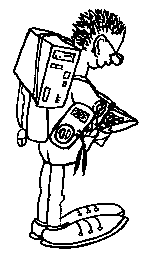Hickok 539A tube tester
Having 3 tube radios from 1950 .. 1960ies, I though it’s time to also have a tube tester.
You can have the simple ones, but also a lab level device. All these tube testers come from 1950 .. 1960 years. You can have one for european tubes only or more general ones with american and european tubes. So I decided to get an american version. All modern amplifier tubes are american brand, so this is a good approach.
Tube testers are expensive items. Finally I found a Hickok device -The #1 vendor of tube testers back in the days.
My Hickok 539A is a complex and beautiful device.
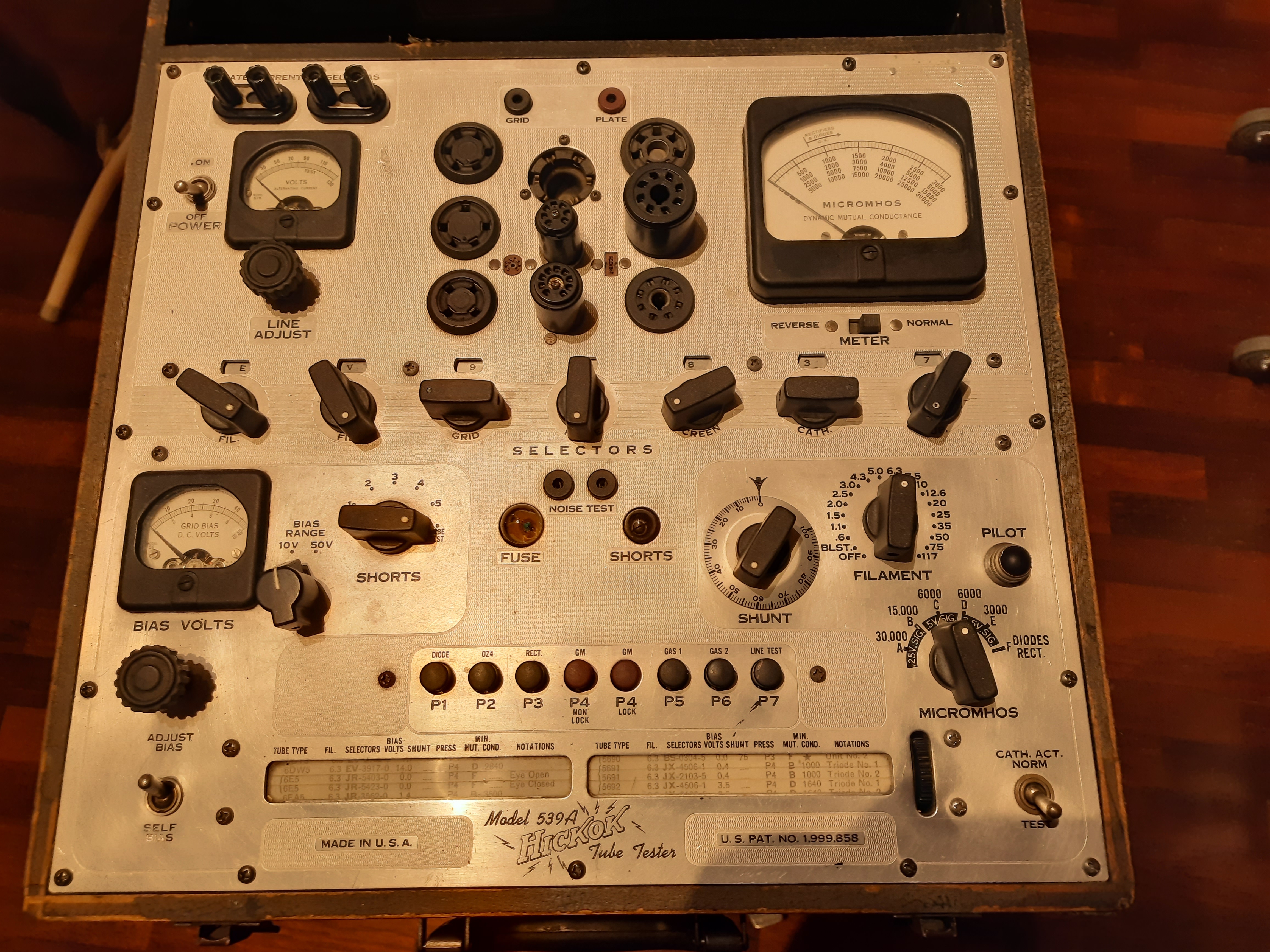
Hickok 539A overall view
While all/most german tube testers use pile of paper cards to set up the tester for a special tube type, american tube testers usually use rotary switches to individually set up the device a tube to test. In the picture above the selector row contains 7 switches for setting up the device for a particular tube.
Filament voltage can be set up in a wide range between 0.6V and 117V. An expected Micromhos range (in german: Steigung Ia/V) can be set between 3.000 and 30.000.
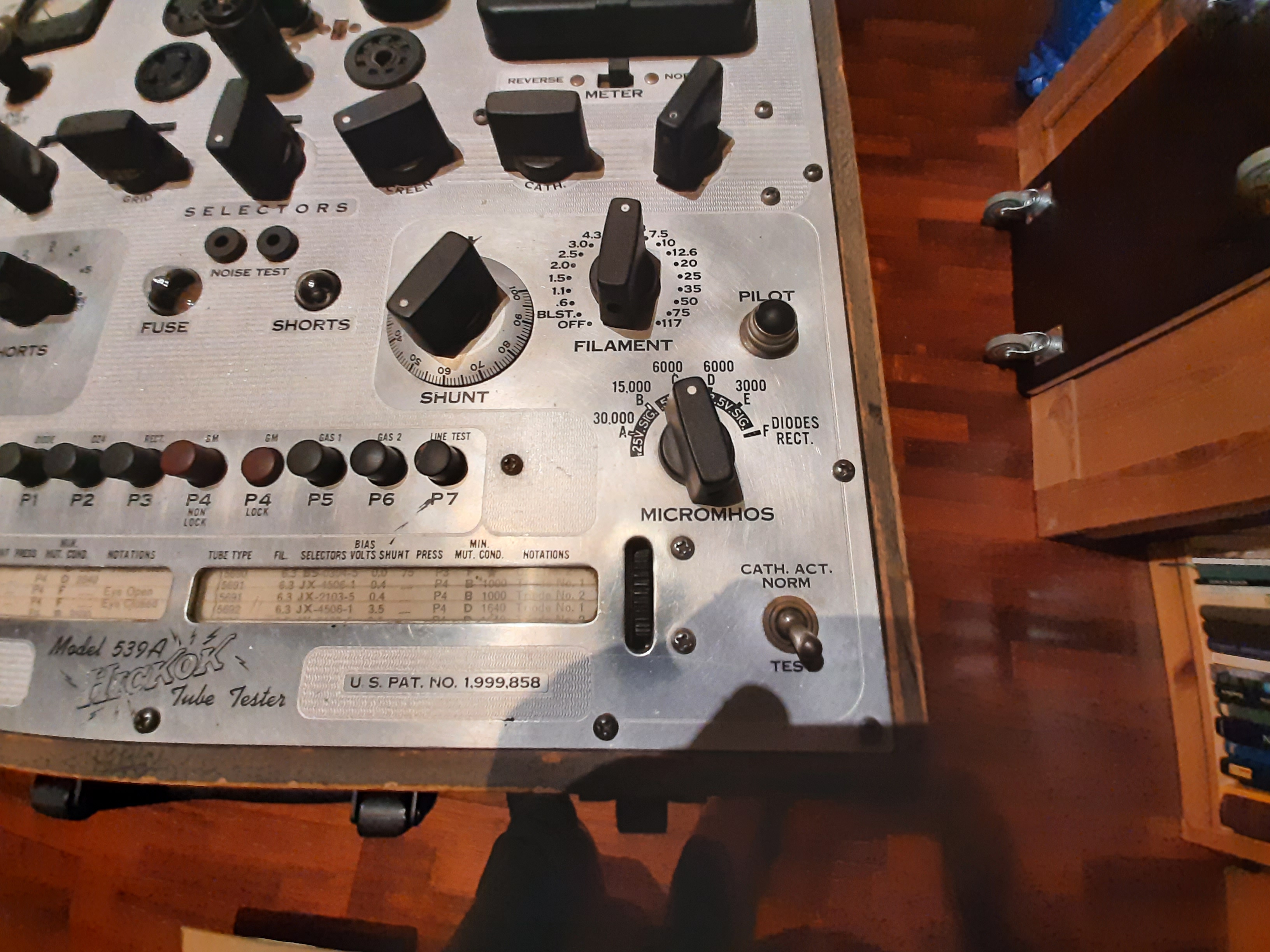
Filament switch, Micromhos switch, shunt regulator
Gate BIAS can be set with a voltage regulator in range 0..10V or 0..50V. Shorts inside the tube also can be identified (Shorts switch).
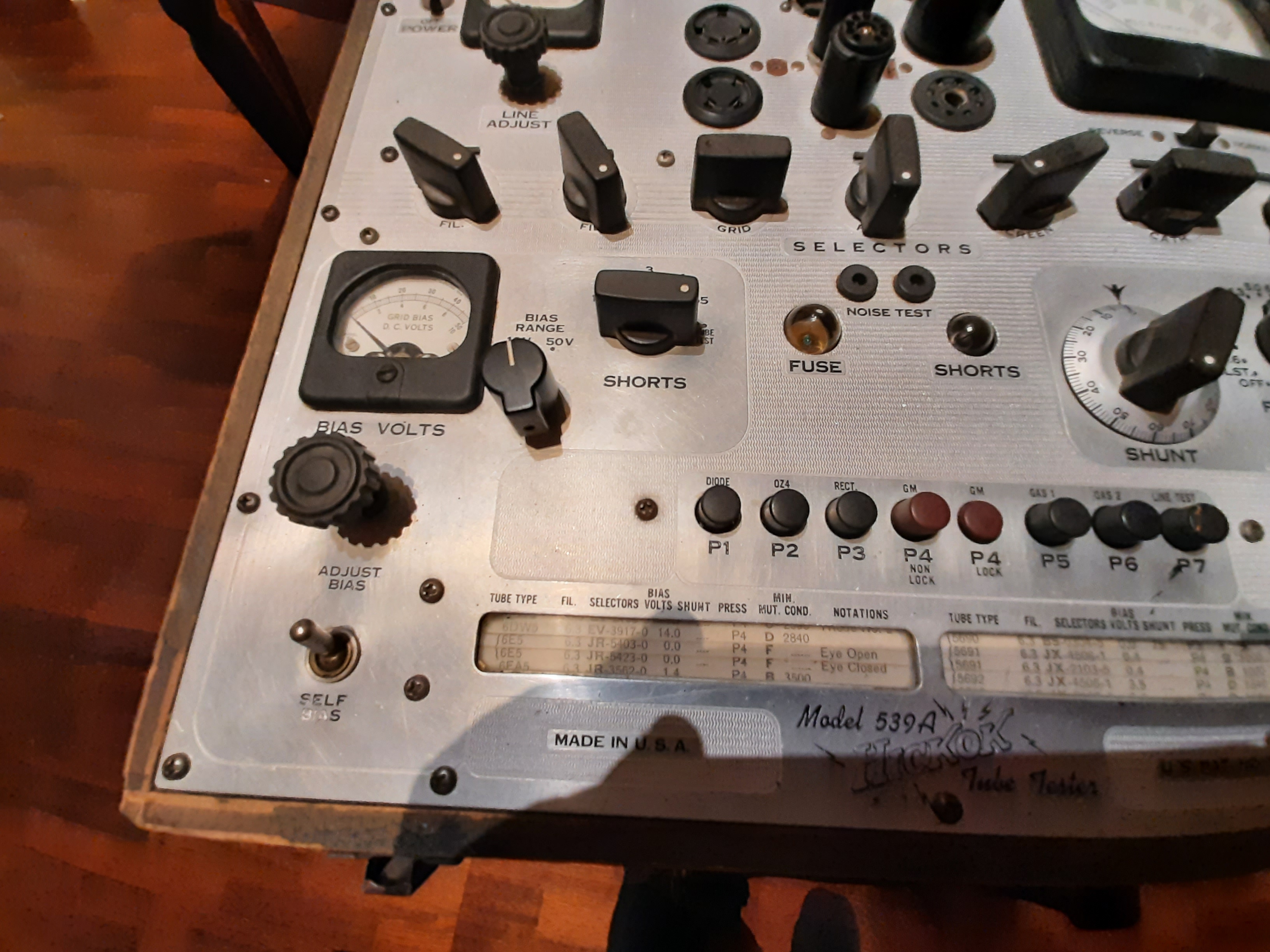
Bias regulator
Before using the device for any measurement, the device can be somehow " calibrated" to AC input (110V US).
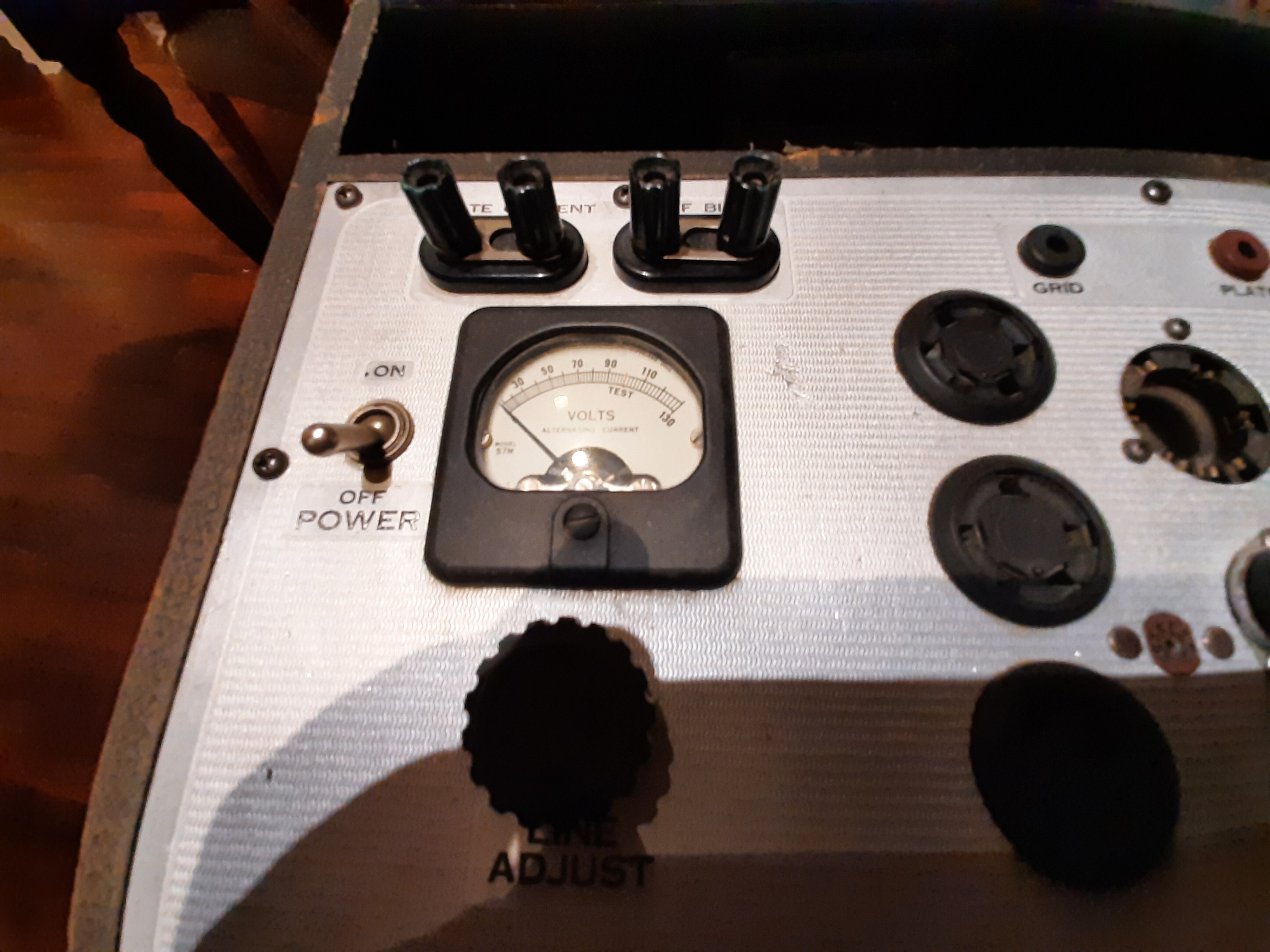
Calibration to AC supply voltage
After calibration, the tube can be inserted in one of 11 tube connectors.
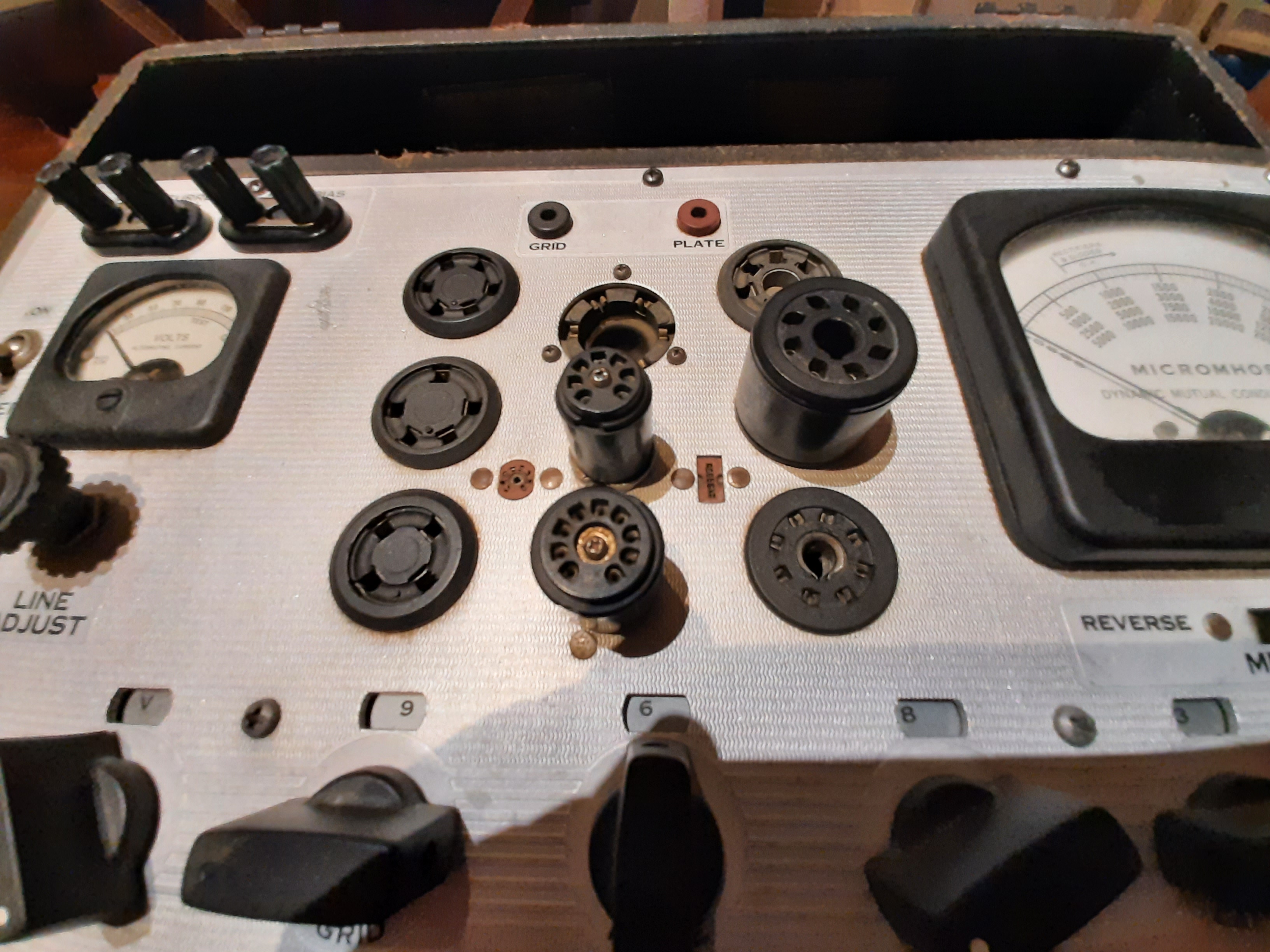
11 standard tube connectors
The following image gives the name of the sockets available.
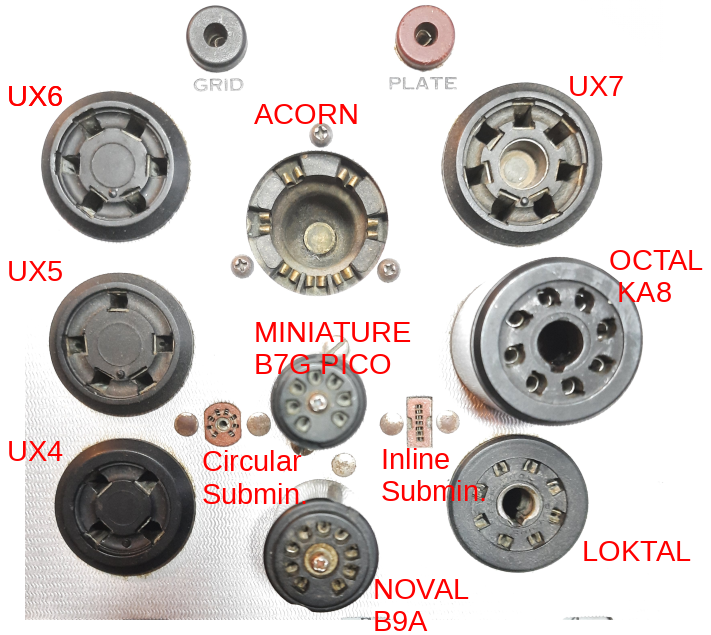
Socket names were collected from Internet sources. Some frequent sockets are missing (e.g. Rimlock and Magnoval). They need to be added via Adapters.
Inside of the device, the following pictures were taken.
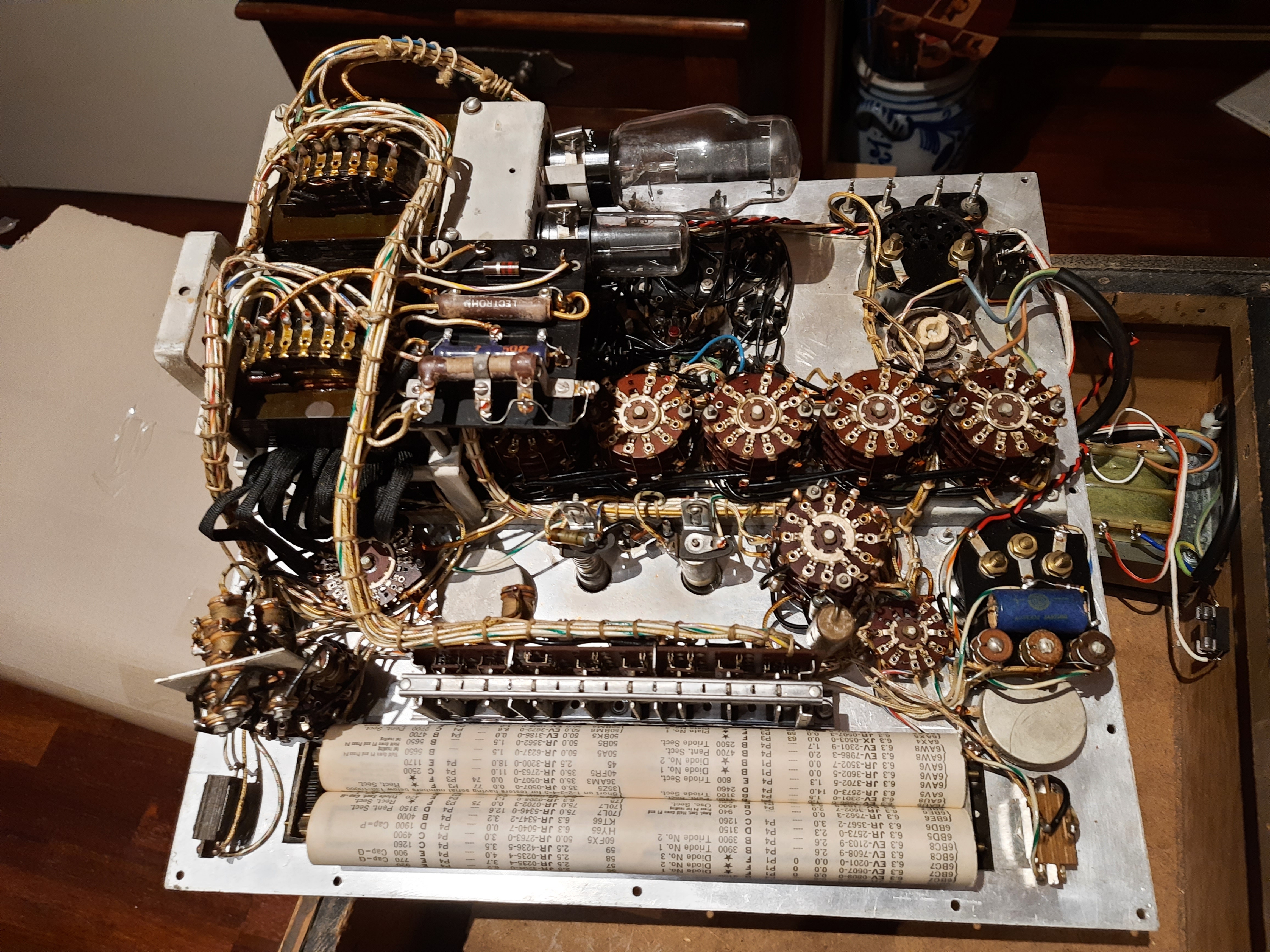
Inside the device. 2 transformers at the top left, tube data “display” at the bottom, and many other switching and regulation devices….
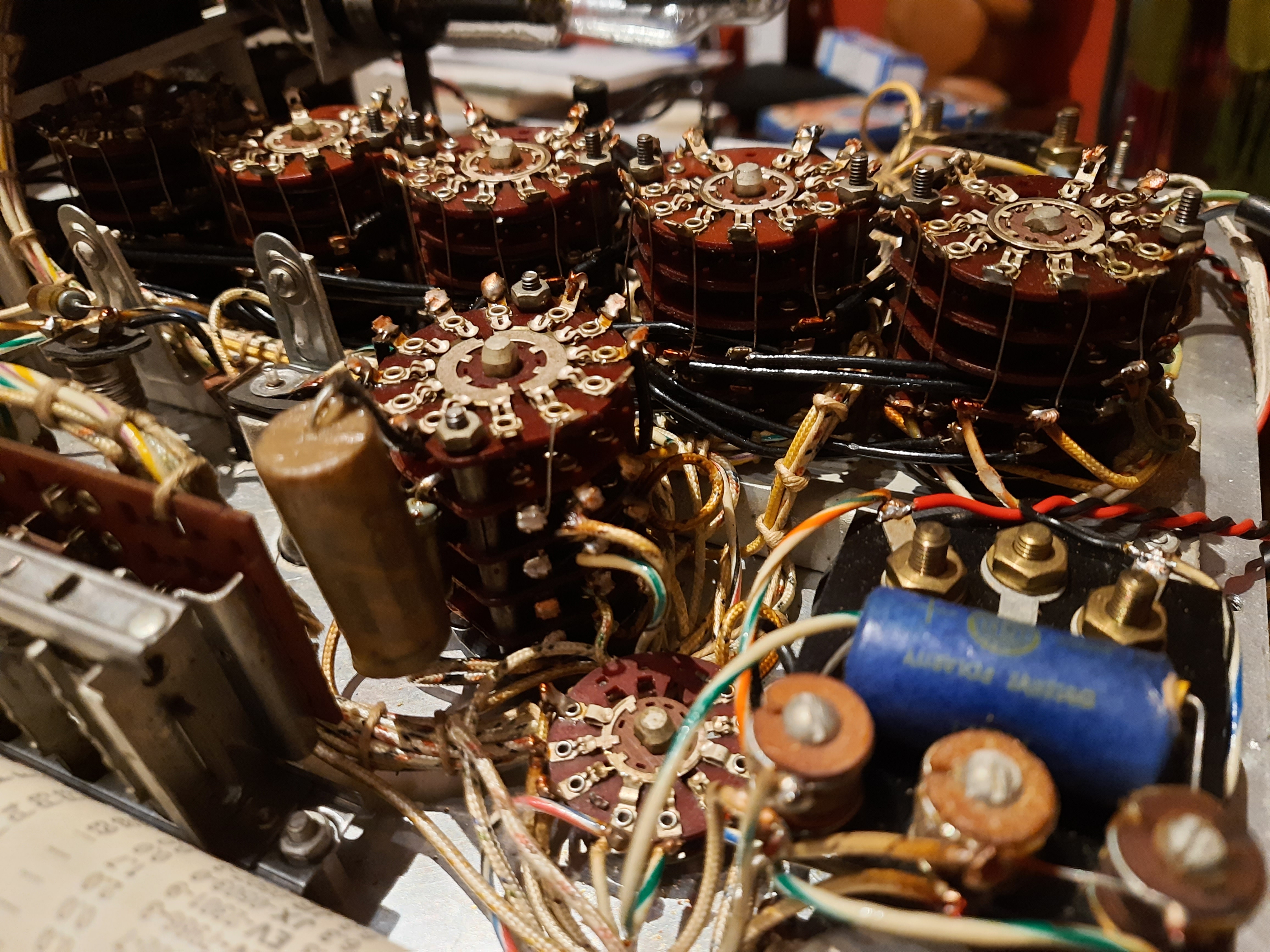
A whole bunch of multi-layer switches
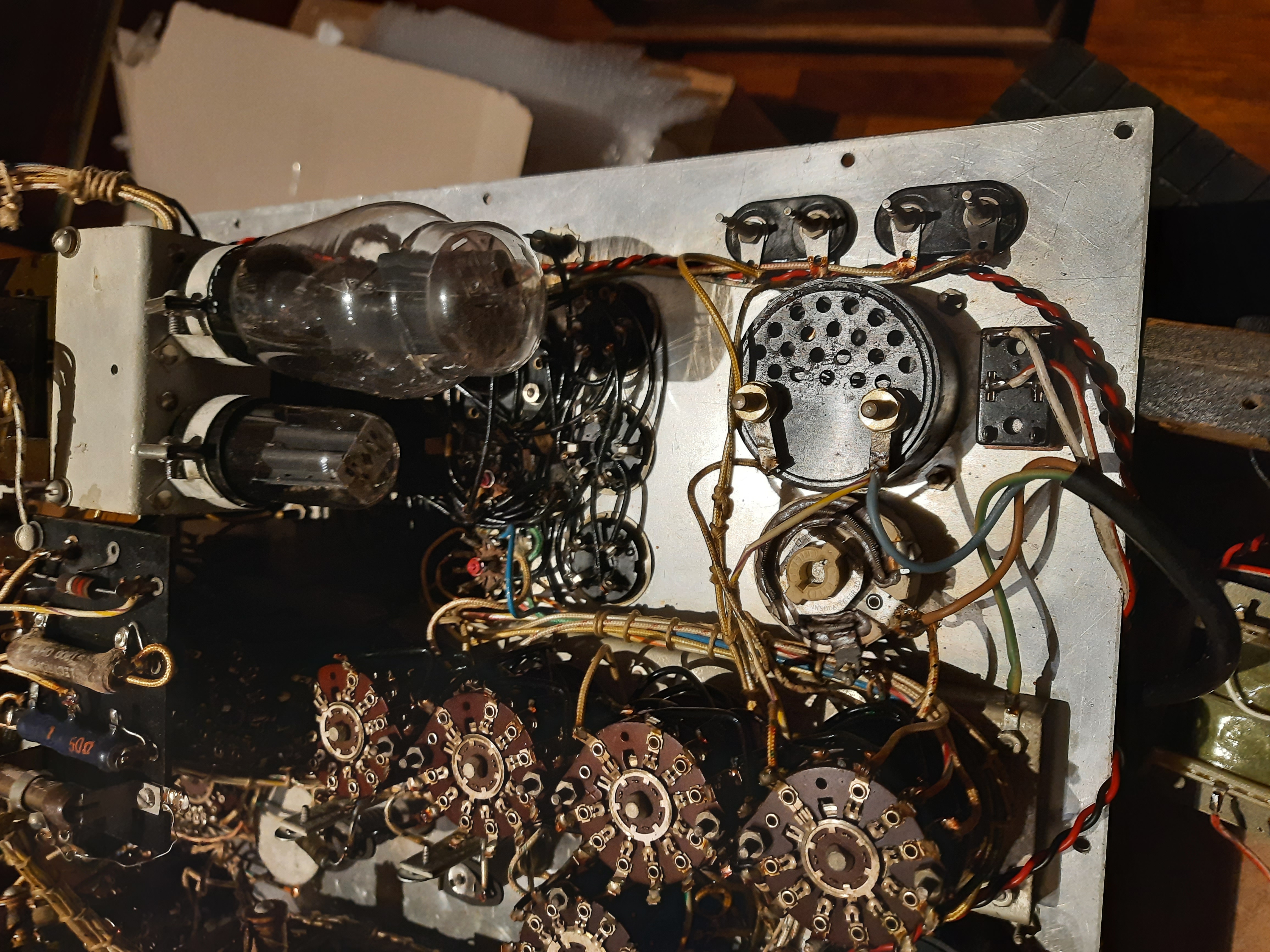
Power supply tubes
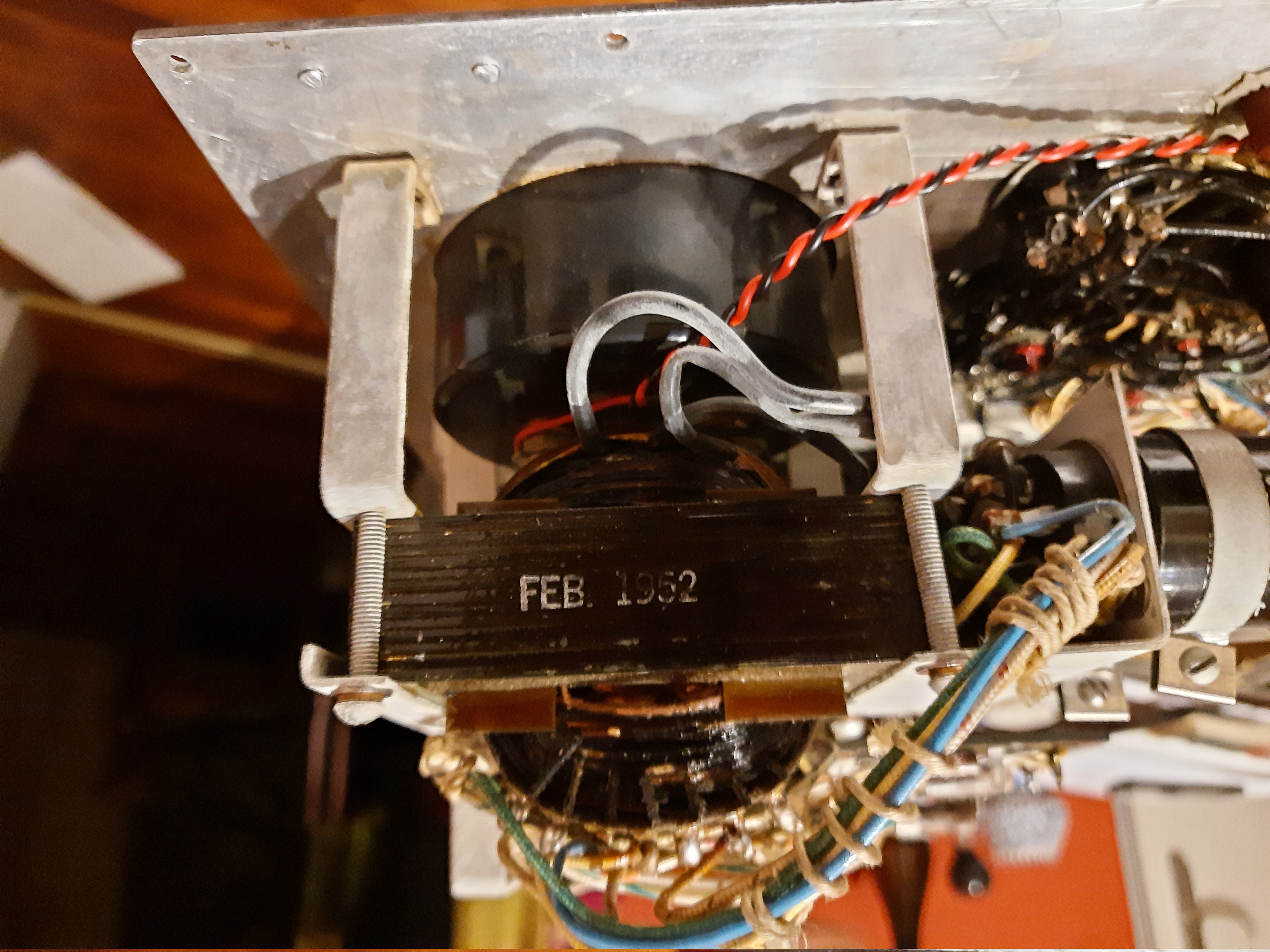
The date code, February 1952
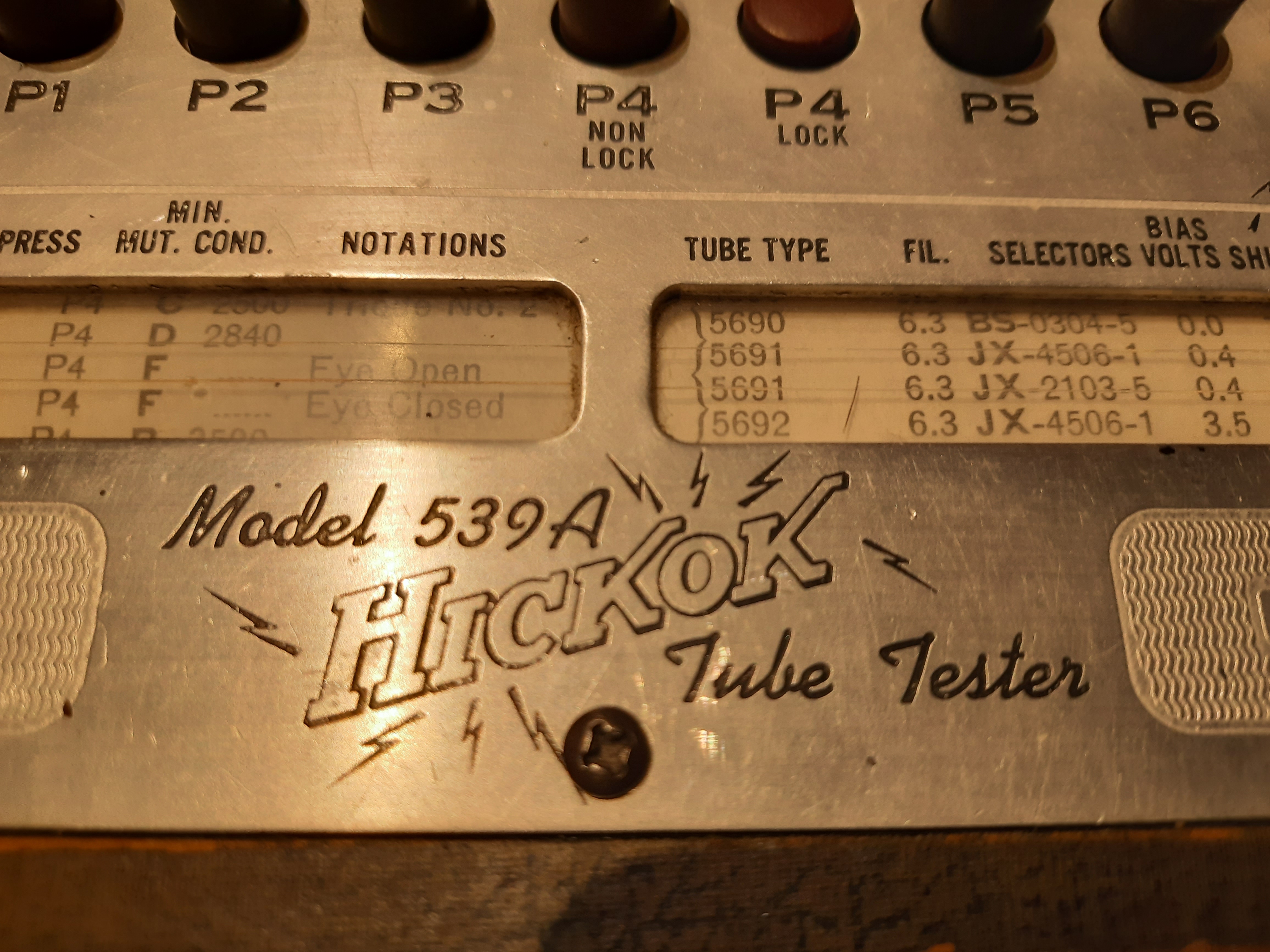
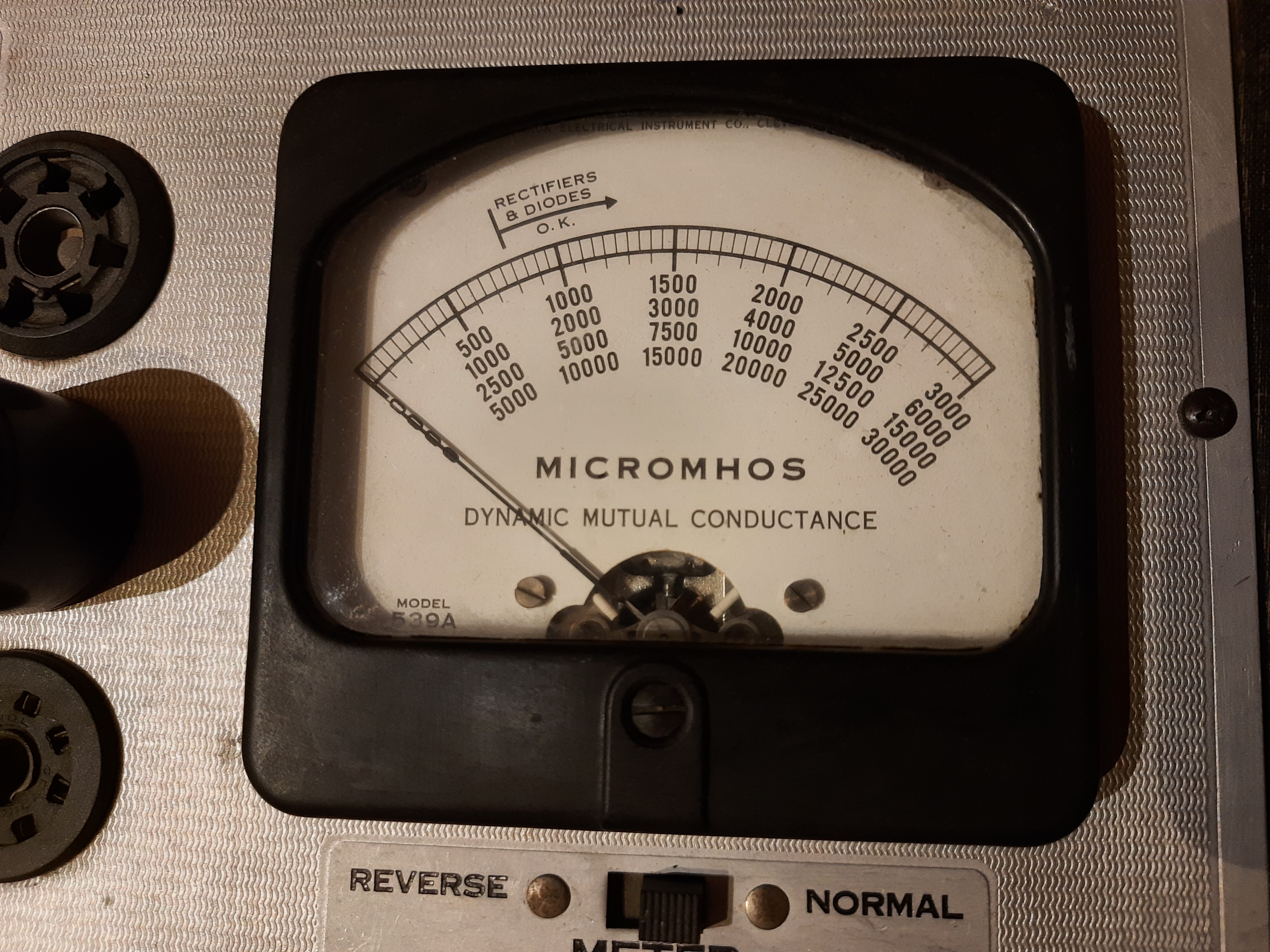
For us Europeans: 1000 Micromhos is 1mA/V …
Testing unknown tubes
Knows tubes can be selected by entering a code like ff-abcd-e, example EV-2781-9 with the rotary dials in the middle of the device labeled “Selectors”. These dials allow to connect the tester inputs to the tube socket pins. From the left, the dials are for Filament 1 (f), Filament 2 (f), Grid gate (g1), Plate (a), Screen gate (g2), Cathode (k) and Suppression gate (g3). |0|A|P| For known tubes, there are lists containing the code ready to enter. For example, for EF80 the code is EV-2781-9. For the first triode inside an E80CC, code is EV-7608-0, for the second triode EV-2103-0.
For unknown tubes, testing is still possible. The code to enter then is not contained in any list but must be developed by checking tubes data sheet.
For example, the EF98 has a 7 pin miniature socket. Filament voltage is 6.3 volts. Pin numbering is:
1=g1, 2=cathode, 3=f, 4=f, 5=anode/plate, 6=g2, 7=g3.
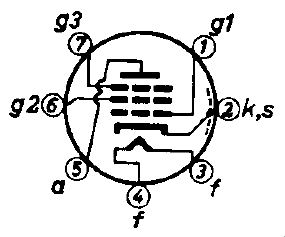
EF98, seen from bottom side
From pin numbering we have (in order of code letters):
34-1562-7
Socket numbering for the sockets used in 539A:
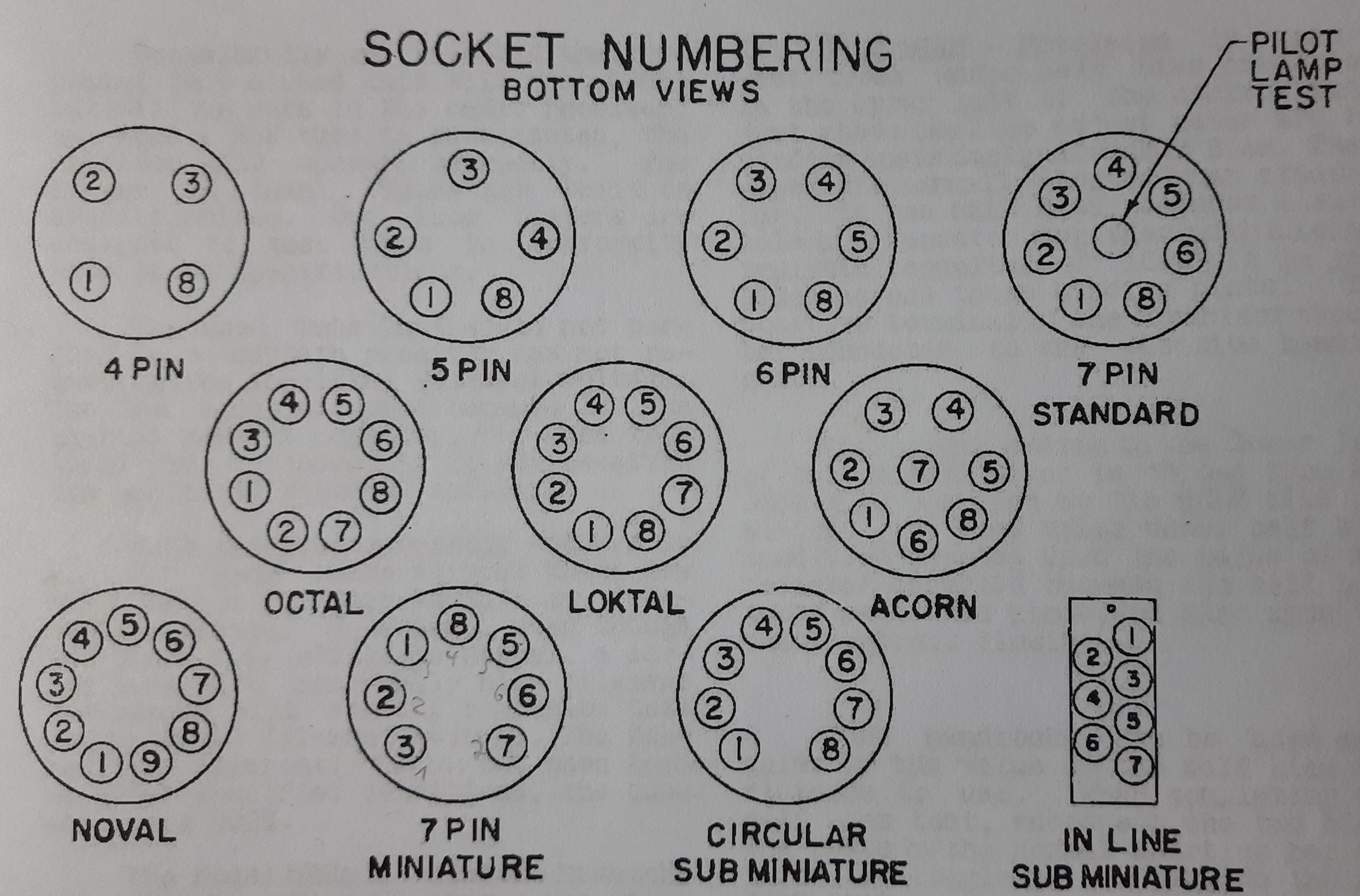
Hickok 539A socket numbering
Historically, Hickok has introduced two ideas that complicate things.
Pin numbering in Hickok 539A differs from convention for some sockets. For e.g. 7 pin miniature, the numbers are reordered for pins 1,3,4 to 3,1,8. Don’t ask why. So, the adjusted code is:
18-3562-7
For the filament pin part (“18”), numbers are not used but a combination of characters. Check the following table:
| Socket pin number | Filament 1 | Filament 2 |
|---|---|---|
| 0 | A | P |
| 1 | B | R |
| 2 | C | S |
| 3 | D | T |
| 4 | E | U |
| 5 | F | V |
| 6 | G | W |
| 7 | H | X |
| 8 | J | Y |
| 9 | K | Z |
Mapping of filament pin numbers to code characters
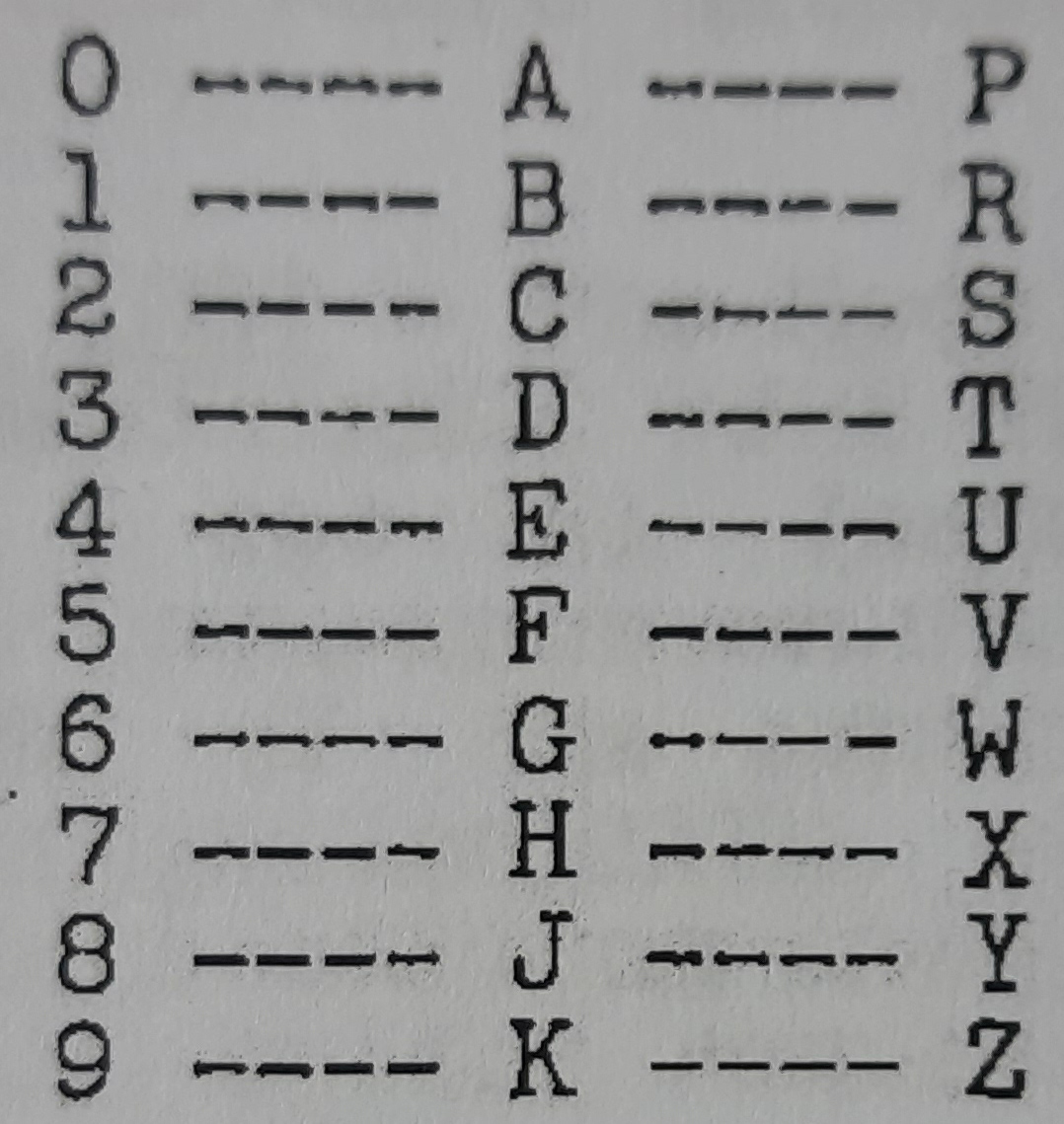
Scan of mapping table
So for pins 1,8 we get B,Y. This is the same as J,R. So, the adjusted code is:
JR-3562-7 (I guess BY-3562-7 is also correct)
Required BIAS voltage (gate voltage) can be taken from data sheet. Plate voltage is fixed, on my device about 130 volts. Of course, there is no Micromhos target value because there is no list entry in Hickok lists. But this value also can be taken as a landmark from the data sheet.
This example with EF98 is already some special case, because the EF98 is a battery tube, designed for low plate voltage. It’s plate voltage maximum from datasheet is 50 volts. Because the Hickok 539A delivers about 130 volts if adjusted to 100 volts line, this is already too much. But it is possible to adjust line voltage to lower values than 100 volts and then the tube can be tested - at least if the test runs only for a short time.
This allows to do some basic tests also for unknown tube types. If you have a new and good tube of the same kind, even comparisons of the tube to test can be done.
